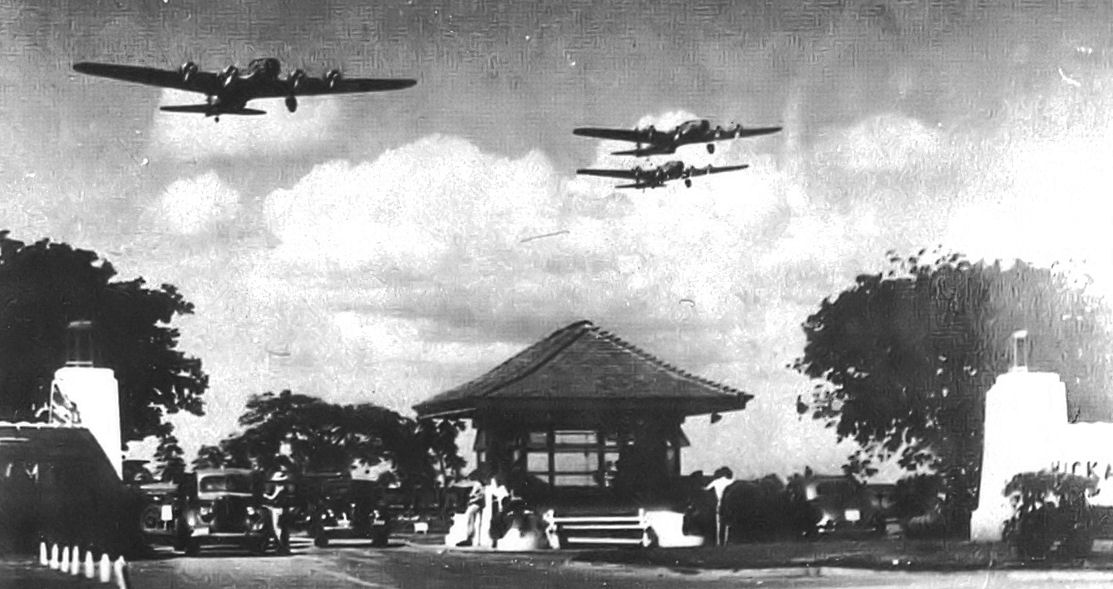Some of the details of these flights are still shrouded in historical obscurity, partly because the 14-hour Wake Island to Port Moresby sector required the B-17D bombers to fly (illegally) across the Caroline Islands, which were governed by Japan
The region’s meager defense resources were deemed reasonable given the additional demands placed on Australia and New Zealand during the war with Germany. Yet, in the months preceding the Pacific War, this mentality experienced a significant shift. According to Michael Claringbould and Peter Ingman in their book South Pacific Air War Volume 1, the US revised its defense strategy in the Philippines in 1941 because it thought its brand-new Boeing B-17 Flying Fortress heavy bombers could defend the territory.
While it was clear that these bombers could go across the Pacific to the Philippines, there was essentially no airfield infrastructure between Hawaii and Australia that had been built since Kingsford-Smith’s pioneering flight in 1928. In fact, the Royal Australian Air Force (RAAF) Catalinas on their 1941 delivery flights were the first aircraft to fly the whole US—Australia trip since then.
The RAAF had already started building strips at many locations, including Port Moresby, Rabaul, and New Caledonia, for its recently acquired Lockheed Hudsons, while the US hurried to build airfields on other Pacific islands. US engineers were happy to see that substantial work had already been done in the South Pacific towards a transpacific aviation route, with New Zealand building works also ongoing in Fiji.
Nine B-17D Flying Fortresses made history in September 1941 when they were the first heavy bombers to reach the Philippines via the “Pacific Route.” This flight’s first delivery to the Pacific was remarkable; it encountered some of the same navigational difficulties that had led to Amelia Earhart’s loss some five years earlier (Earhart had disappeared while on an easterly transpacific flight, after leaving Lae in New Guinea). The B-17 aircrew lacked experience and had never tried such lengthy missions.
Some of the specifics of these flights are still shrouded in historical obscurity, partly because the bombers flew (illegally) over the Caroline Islands, which were governed by Japan, during the 14-hour segment from Wake Island to Port Moresby. This is why the sector was flown at 25,000 feet, without running lights, throughout the night. Crews carefully manned their 0.50 calibre guns while maintaining radio silence. On September 8, 1941, around noon, all aircraft arrived at Port Moresby’s Seven-Mile Drome after flying successfully into Japanese territory.
The recently graded Seven-Mile field was rough, and when the bombers landed and taxied in, the Fortresses’ undercarriage hydraulic suppressors were put to the absolute limit. As a bomber shut down, “fuzzy-wuzzy” refuellers with red lotus blossoms tucked in their hair behind each ear were the first to welcome it. Yet, they were only dressed in a “lava-lava” long skirt waist cloth, and at least one diarist described them as “huge and terrifying.”
These locals then manually pumped 3,200 gallons of fuel from 55-gallon (US) drums into each aircraft, which took more than four hours for each bomber. The nine left for Darwin on September 10 after taking advantage of the RAAF’s hospitality for a day of rest. The bombers successfully arrived at Clark Field in the Philippines without difficulty, demonstrating the effectiveness of the Pacific Route. The result was obviously pleasing to the Washington establishment, as each member of the crew received a Distinguished Flying Cross in recognition of their accomplishment. A second flight with 26 B-17s took place in November.
South Pacific Air War Volume 1 is published by Casemate Publishing and is available to order here.

Photo by U.S. Air Force

